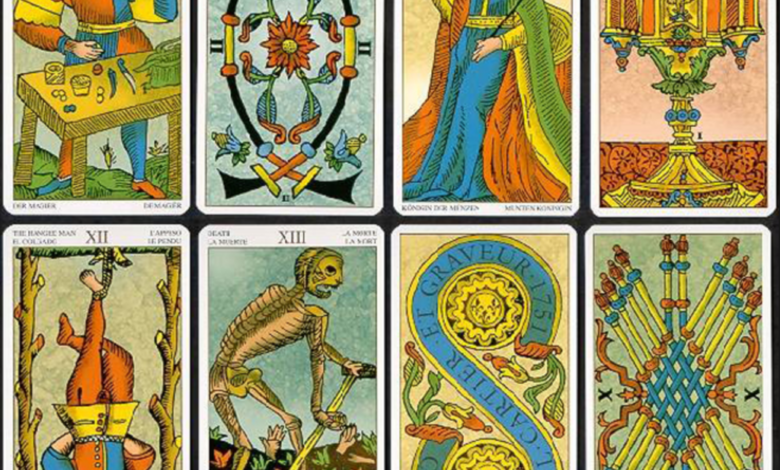
In a world where the unknown often captivates our curiosity, psychics have long been regarded as individuals who possess the ability to tap into realms beyond the ordinary. The practice of psychic readings is surrounded by an air of mystique and fascination, drawing people seeking insights into their lives, relationships, and futures. Psychics claim to have extrasensory perception (ESP), allowing them to access information beyond the scope of the five senses. In this article, we will delve into the intriguing world of psychic readings, exploring the methods, perceptions, and controversies surrounding this age-old practice.
Understanding Psychic Abilities:
At the heart of psychic readings are purported psychic abilities, often categorized into different forms such as clairvoyance, telepathy, and precognition. Clairvoyance, in particular, is a commonly associated ability with psychics. It involves the claimed ability to gain information about an object, location, or event beyond normal human perception. Psychics who specialize in clairvoyance may use tools such as crystals, tarot cards, or even the energy present in a space to channel their visions.
Tarot Cards and Divination:
One popular method psychics employ is the use of tarot cards for divination. The tarot deck, consisting of 78 cards, is believed to have origins dating back to the 15th century. Each card carries symbolic imagery and meaning, providing a medium for psychics to interpret messages from the spiritual realm. During a tarot reading, a psychic may ask the client to shuffle the deck while focusing on their question or concern. The cards are then drawn and laid out in a spread, with each position representing different aspects of the inquiry.
The interpretation of tarot cards requires a combination of intuition, symbolism, and a deep connection with the energies surrounding the individual seeking guidance. Psychics claim that they can tap into a universal energy field to receive messages that guide their interpretations, offering insights into the past, present, and potential future.
Mediumship and Communication with Spirits:
Another facet of psychic readings involves mediumship, the ability to communicate with spirits or entities from other dimensions. Mediums often act as intermediaries between the living and the spirit world, relaying messages from departed loved ones or providing guidance from benevolent entities. The process of mediumship may involve receiving messages through visions, auditory perceptions, or an overall intuitive understanding of the spiritual information.
The skeptics often question the authenticity of mediumship, attributing the experiences to psychological factors or a keen understanding of human behavior. However, for those who seek solace and closure, the messages received during a mediumistic reading can be profoundly meaningful and provide a sense of connection to the unseen realms.
Energy Readings and Auras:
Many psychics claim the ability to perceive and interpret the energy fields surrounding individuals, commonly referred to as auras. Auras are said to contain information about a person’s emotional, physical, and spiritual well-being. During an energy reading, a psychic may visually or intuitively sense the colors and patterns in a person’s aura, using this information to offer insights into their current state and potential challenges or opportunities.
Skeptics often argue that the perception of auras may be influenced by psychological factors or the general demeanor of the person being read. However, proponents of energy readings assert that this practice can provide valuable information about an individual’s holistic health and guide them towards a more balanced and harmonious life.
Astrology and Cosmic Influences:
Astrology, a system that interprets celestial positions and their influence on human affairs, is another tool frequently employed by psychics during readings. Astrologers analyze birth charts, which map the positions of celestial bodies at the time of a person’s birth, to gain insights into their personality, relationships, and life path. Psychics who integrate astrology into their practice believe that cosmic forces exert a profound influence on individual destinies.
While many find comfort and guidance in astrology, skeptics argue that the personality traits and predictions associated with astrological signs are often general and can apply to a broad range of individuals. However, for those who resonate with the cosmic perspective, astrology becomes a fascinating and insightful tool for self-discovery.
The Controversy Surrounding Psychic Readings:
Despite the popularity of psychic readings and the loyal following of individuals who seek guidance from psychics, the practice remains a subject of controversy. Skeptics argue that many psychic readings can be attributed to cold reading, a technique where the practitioner makes generalized statements and observes the client’s reactions to tailor their responses accordingly.
Additionally, the lack of scientific evidence supporting the existence of psychic abilities raises skepticism in academic and scientific communities. The scientific method demands empirical evidence, and the subjective nature of psychic experiences often makes it challenging to conduct controlled experiments to validate or refute these claims.
Critics also highlight the ethical concerns related to psychic readings, especially when vulnerable individuals seek guidance during challenging times. Unscrupulous individuals may take advantage of people’s emotional states, providing false hope or manipulating them for financial gain.
What Is a Spiritual Healer: Unveiling the Power of Energetic Healing
In tandem with psychic readings, the realm of spiritual healing has gained prominence as people seek holistic approaches to health and well-being. A spiritual healer is an individual who claims to facilitate healing by channeling or manipulating spiritual energies. This form of alternative therapy is rooted in the belief that imbalances in the spiritual or energetic body can manifest as physical or emotional ailments.
Types of Spiritual Healing:
There are various approaches to spiritual healing, each with its unique methods and philosophies. One prevalent form is energy healing, where practitioners channel healing energy into the recipient’s body to promote balance and vitality. Reiki, for example, is a Japanese technique that involves the laying on of hands to transfer healing energy. Practitioners claim that the energy flow can remove blockages, stimulate the body’s natural healing abilities, and promote overall well-being.
Crystal healing is another form of spiritual healing that utilizes the energetic properties of crystals to restore balance. Different crystals are believed to resonate with specific energies, and placing them on or around the body is thought to facilitate healing and enhance spiritual growth. While some find solace and improvement in their well-being through crystal healing, skeptics argue that the effects may be attributed to a placebo response rather than the inherent properties of the crystals.
Sound therapy is yet another modality employed by spiritual healers, where specific sounds, such as chanting, singing bowls, or tuning forks, are used to bring about healing vibrations. Proponents assert that these vibrations can resonate with the body’s energy centers, promoting relaxation, reducing stress, and facilitating physical and emotional healing.
Holistic Approaches to Healing:
One of the defining characteristics of spiritual healing is its holistic approach, addressing the interconnectedness of the mind, body, and spirit. Spiritual healers often consider the root causes of ailments, viewing them as manifestations of deeper spiritual or energetic imbalances. This perspective stands in contrast to conventional medicine, which typically focuses on treating symptoms rather than exploring the underlying spiritual or energetic aspects of health.
While spiritual healing can complement conventional medical treatments, it is essential for individuals to approach it with an open mind and a discerning attitude. Integrating spiritual healing into one’s wellness journey requires careful consideration and consultation with healthcare professionals to ensure a comprehensive and balanced approach to health andics claim that the cards serve as a conduit for spiritual messages, helping them unveil hidden truths and insights that might be otherwise inaccessible through conventional means.
Channeling Energies and Mediumship:
How do psychics give readings involves channeling energies and connecting with the spirit world. Mediumship is the practice of communicating with spirits, often with the intention of relaying messages to the living. Psychics who specialize in mediumship claim to act as intermediaries between the earthly realm and the spiritual plane. They may receive information, impressions, or even direct messages from deceased loved ones or spirit guides.
During a mediumship session, a psychic may enter a trance-like state or simply focus their heightened senses to perceive messages from the other side. Skeptics often attribute these experiences to psychological factors or suggest that psychics may be skilled at reading subtle cues from their clients. However, proponents argue that the authenticity of mediumship lies in the unique and personal details that emerge during a reading, details that the psychic could not have known through ordinary means.
Astrology and Numerology:
Beyond tarot cards and mediumship, psychics often utilize ancient practices such as astrology and numerology. Astrology involves the study of celestial bodies’ positions and movements, with the belief that these cosmic patterns can influence human affairs and natural events. Psychics who specialize in astrology may create natal charts based on an individual’s birth date, time, and location, providing insights into their personality, relationships, and life path.
Numerology, on the other hand, assigns significance to numbers and their influence on various aspects of life. Psychics skilled in numerology may analyze a person’s name or birthdate to uncover hidden meanings and offer guidance. These practices add a layer of complexity to the diverse methods psychics employ, showcasing the breadth of tools available to those who claim to possess extrasensory abilities.
Controversies Surrounding Psychic Readings:
Despite the enduring popularity of psychic readings, the practice remains a subject of skepticism and controversy. Critics argue that many psychics use vague statements and generalizations that could apply to a wide range of individuals. The Barnum effect, a psychological phenomenon where people accept vague and general personality descriptions as personally meaningful, is often cited as an explanation for the perceived accuracy of psychic readings.
Additionally, the lack of scientific evidence supporting the existence of psychic abilities has led many to dismiss the practice as pseudoscience. Skeptics contend that the burden of proof lies with those making extraordinary claims, and until empirical evidence is provided, the legitimacy of psychic readings remains in question.
What Is a Spiritual Healer: Nurturing the Body, Mind, and Soul
While psychic readings delve into the realms of extrasensory perception, spiritual healing focuses on the holistic well-being of individuals, addressing not only the physical but also the emotional and spiritual aspects of health. A spiritual healer is someone who, through various techniques and practices, seeks to restore balance and harmony to an individual’s overall existence.
Energy Healing and Chakra Balancing:
One prevalent aspect of spiritual healing involves the manipulation and balancing of energy fields within the body. Chakras, according to ancient Eastern philosophies, are energy centers that exist along the spine, each associated with specific aspects of life and health. Spiritual healers may use techniques such as Reiki, a Japanese form of energy healing, to channel energy into the recipient’s body, aiming to remove blockages and promote healing.
During a session, a spiritual healer may assess the condition of the chakras, identifying areas of imbalance or stagnation. Through gentle touch or non-contact methods, they attempt to realign and harmonize the energy flow, fostering a sense of well-being and vitality in the process.
Mind-Body Connection:
Spiritual healing recognizes the interconnectedness of the mind, body, and spirit. Practices such as meditation, mindfulness, and guided imagery are often incorporated to promote mental and emotional well-being. By addressing the mental and emotional aspects of an individual, spiritual healers aim to alleviate stress, anxiety, and other negative emotions that may manifest as physical ailments.
Crystals and Vibrational Medicine:
In the realm of spiritual healing, crystals are often regarded as powerful tools for balancing and enhancing energy. Each crystal is believed to possess unique properties that can influence and support specific aspects of well-being. Spiritual healers may place crystals on or around the body during a session, harnessing their vibrational frequencies to promote healing and spiritual growth.
The Role of Intuition and Compassion:
Central to the practice of spiritual healing is the intuitive and compassionate nature of the healer. Unlike traditional medical practitioners who focus primarily on physical symptoms, spiritual healers aim to understand the underlying causes of imbalance, often considering emotional and spiritual factors.
The ability to empathize and connect with individuals on a deep level is a hallmark of effective spiritual healing. Healers may create a sacred and nurturing space during sessions, allowing individuals to explore and release pent-up emotions, facilitating the healing process.
Integration with Conventional Medicine:
While spiritual healing emphasizes alternative approaches, it is not necessarily exclusive of conventional medicine. Many individuals seek spiritual healing as a complementary therapy to conventional medical treatments. The integration of both approaches is often seen as a holistic approach to health, acknowledging the importance of addressing the physical, mental, and spiritual aspects of an individual’s well-being.
Conclusion: Bridging the Mystical and the Practical
In exploring the practices of psychics and spiritual healers, one encounters a diverse landscape of beliefs, methods, and controversies. Whether seeking a glimpse into the future through a psychic reading or pursuing holistic well-being with a spiritual healer, individuals are drawn to these practices in search of answers, comfort, and healing.
The bold claims made by psychics and spiritual healers invite both wonder and skepticism. While the scientific community may demand empirical evidence to validate these practices, proponents argue that the mysteries of the mind and spirit may extend beyond the reach of current scientific understanding.
Ultimately, the decision to engage with psychics or spiritual healers is a deeply personal one. Whether driven by curiosity, a quest for meaning, or a desire for healing, individuals embark on these journeys with the hope of unraveling the mysteries that lie beyond the veil of the known. In the intersection of the mystical and the practical, the realms of psychic readings and spiritual healing continue to captivate the human imagination, offering a glimpse into the extraordinary possibilities that exist within and beyond ourselves.


